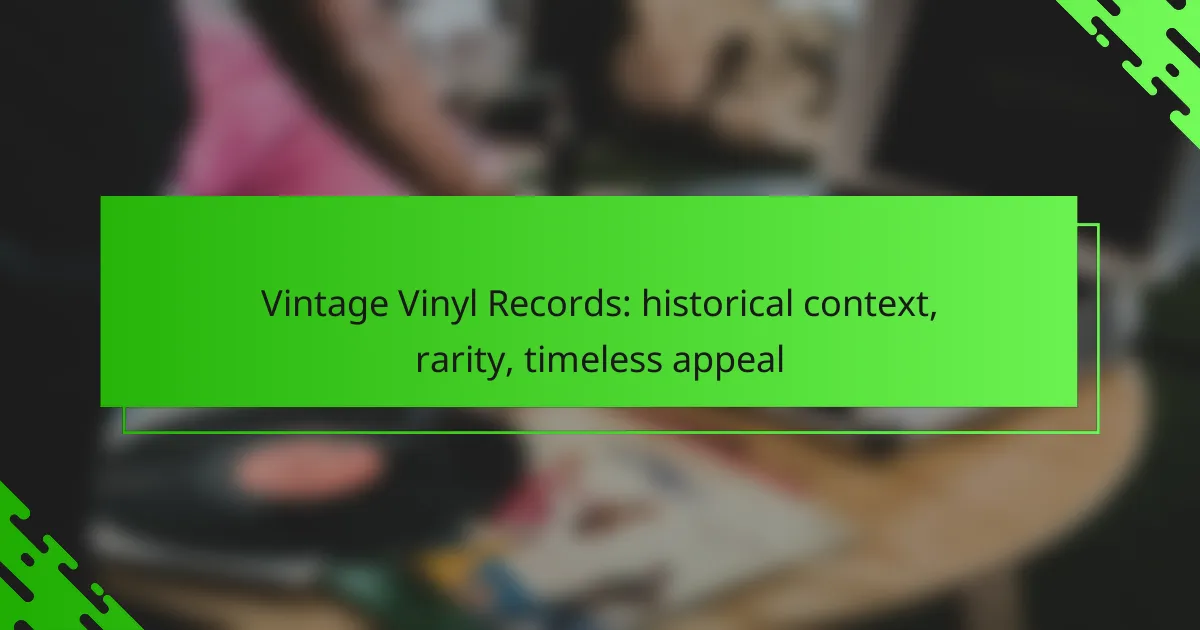Vintage vinyl records hold a unique place in music history, celebrated for their rich sound and cultural significance. Collectors are drawn to albums that not only showcase rare pressings and iconic artwork but also embody the timeless appeal of the eras they represent. With various purchasing options available, from online marketplaces to local fairs, enthusiasts can find pieces that resonate with their personal taste and passion for music history.
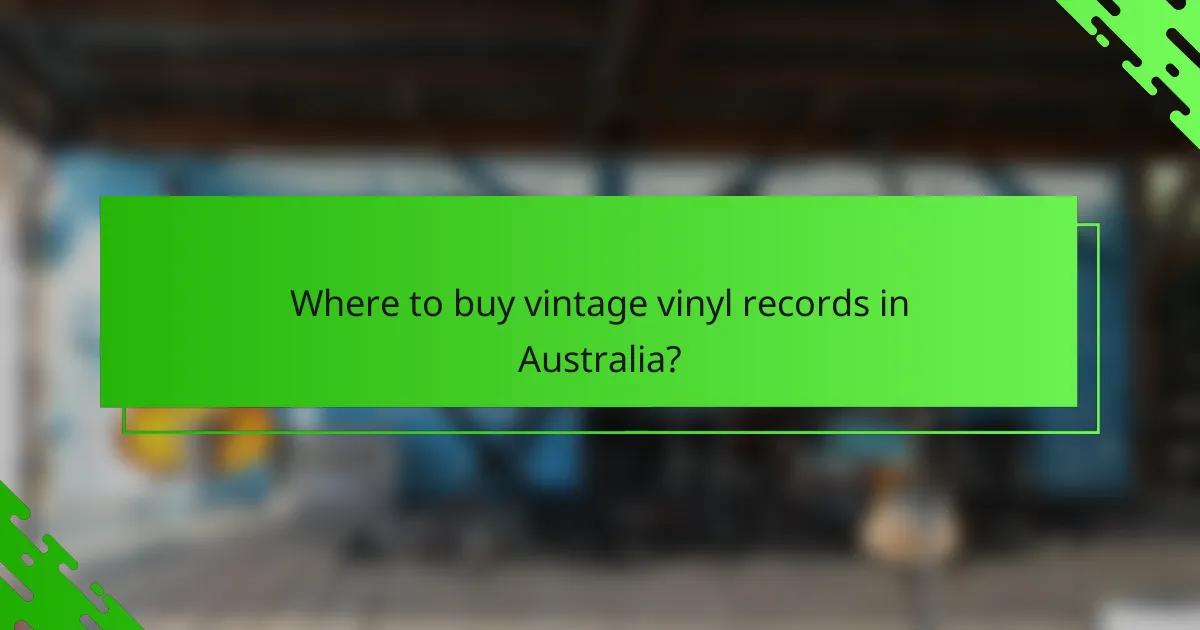
Where to buy vintage vinyl records in Australia?
In Australia, vintage vinyl records can be purchased through various channels, including online marketplaces, specialty record stores, and local vinyl fairs. Each option offers unique selections and price ranges, catering to different collector needs.
Online marketplaces like eBay
Online marketplaces such as eBay are popular for buying vintage vinyl records in Australia. They provide access to a vast array of listings from both individual sellers and shops, often featuring rare finds at competitive prices.
When using eBay, check seller ratings and reviews to ensure reliability. Pay attention to shipping costs, as they can vary significantly. Setting alerts for specific artists or albums can help you snag desirable records quickly.
Specialty record stores in Melbourne
Melbourne boasts several specialty record stores that focus on vintage vinyl. These shops often curate their collections, providing a more personal shopping experience and knowledgeable staff who can offer recommendations.
Some notable stores include Northside Records and Polyester Records, which frequently host events and offer a selection of new and used vinyl. Visiting these stores can also allow you to discover local artists and unique pressings that may not be available online.
Local vinyl fairs and markets
Local vinyl fairs and markets are excellent venues for finding vintage records in Australia. These events often feature multiple vendors, allowing for direct negotiation and the opportunity to inspect records before purchasing.
Check local listings for events like the Melbourne Vinyl Market or the Sydney Vinyl Fair, which occur regularly. Attending these fairs can also connect you with fellow collectors and enthusiasts, enhancing your vinyl hunting experience.
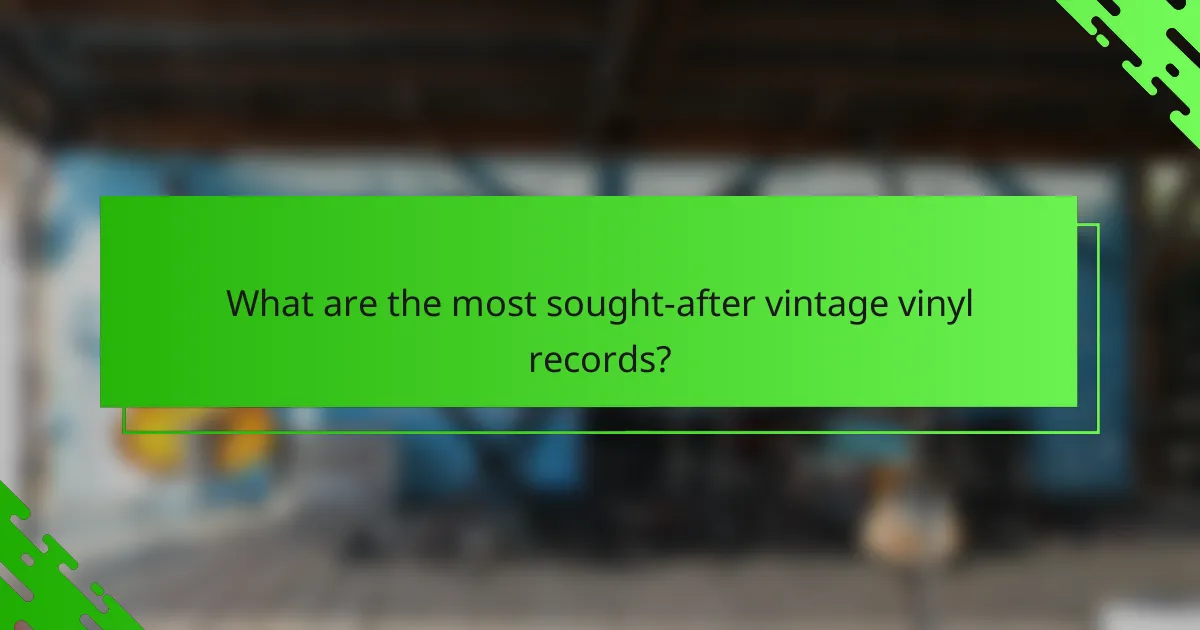
What are the most sought-after vintage vinyl records?
The most sought-after vintage vinyl records are those that hold significant historical value, rarity, and cultural impact. Collectors often prioritize albums that feature unique artwork, limited pressings, or notable artists, making them highly desirable in the market.
The Beatles – ‘Butcher Cover’
The Beatles’ ‘Butcher Cover’ is one of the most infamous and collectible albums in music history. Released in 1966, the cover featured the band dressed in butcher smocks surrounded by raw meat and dismembered dolls, which led to its quick withdrawal from circulation.
Original pressings of this album can fetch thousands of dollars at auction, especially if they are in good condition. Collectors often look for copies with the original cover intact, making it a prized possession for Beatles enthusiasts.
Elvis Presley – ‘Sun Records’
Elvis Presley’s early recordings at Sun Records are highly sought after due to their historical significance in rock and roll. The original 1954 pressings of songs like “That’s All Right” and “Blue Moon of Kentucky” are particularly valuable.
These records are not only rare but also represent the beginning of Elvis’s career, making them essential for collectors. Prices can vary widely, but mint condition copies are often valued in the thousands of dollars.
Bob Dylan – ‘The Freewheelin’ Bob Dylan’
‘The Freewheelin’ Bob Dylan,’ released in 1963, is a landmark album that features some of Dylan’s most iconic songs. The original pressing is notable for its cover art and the inclusion of tracks that defined a generation.
Particularly valuable are copies with the original tracklist, which included songs that were later altered in subsequent pressings. Collectors often seek out these first editions, with prices ranging significantly based on condition and rarity.
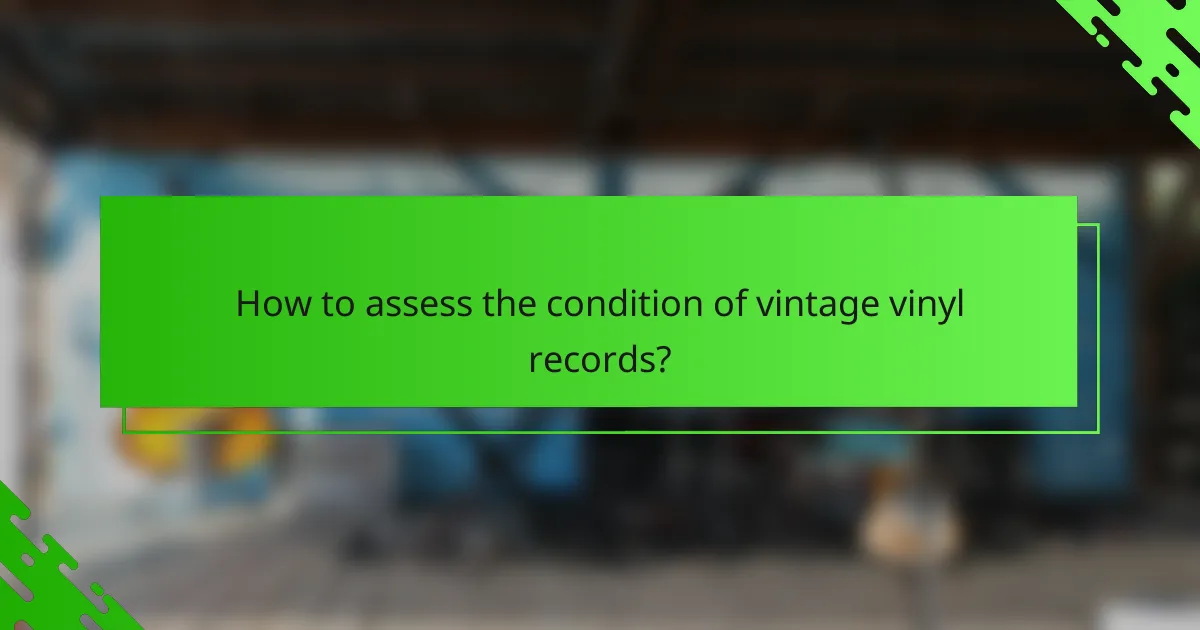
How to assess the condition of vintage vinyl records?
To assess the condition of vintage vinyl records, examine both their physical state and sound quality. This evaluation helps determine their value and collectibility, guiding buyers and sellers alike.
Visual inspection for scratches and warps
Start by closely examining the vinyl surface for scratches, scuffs, and warps. Light scratches may not significantly affect playback, but deep scratches can cause skips or distortion. Warps can lead to uneven playback, so check if the record lies flat on a level surface.
Use a bright light to spot imperfections more easily. If possible, hold the record at an angle to catch reflections that reveal scratches. A record with minimal wear will typically have a higher value.
Play-testing for sound quality
Play-testing is essential for assessing sound quality. Listen for any pops, clicks, or distortion that may indicate damage. A well-maintained record should produce clear sound without interruptions.
Use a high-quality turntable and speakers to accurately gauge the audio performance. If you notice significant noise or skips, the record may require professional cleaning or restoration.
Grading systems like Goldmine
The Goldmine grading system is a widely recognized standard for assessing vinyl condition. It ranges from Mint (M) to Poor (P), providing a clear framework for buyers and sellers. Understanding these grades helps in making informed decisions.
For example, a record graded as Very Good (VG) may have some surface noise but plays well, while an Excellent (EX) record will show minimal signs of wear. Familiarize yourself with these grades to better evaluate your collection or potential purchases.

What factors influence the rarity of vintage vinyl records?
The rarity of vintage vinyl records is influenced by several key factors, including the number of pressings, the popularity of the artist, and the reputation of the record label. Understanding these elements can help collectors identify valuable records and make informed purchasing decisions.
Limited pressings and releases
Records that were produced in limited quantities tend to be more sought after by collectors. For example, albums with press runs of a few hundred copies can fetch significantly higher prices than those with thousands of copies available. Limited editions, such as colored vinyl or special packaging, further enhance rarity.
Collectors should pay attention to the pressing information found on the record label or sleeve. Knowing whether an album is a first pressing or a reissue can greatly affect its value. Researching the specific details of a release can provide insights into its scarcity.
Artist popularity and historical significance
The popularity of the artist at the time of release plays a crucial role in determining a record’s rarity. Albums from iconic musicians or bands, especially those that have had a significant cultural impact, are often more valuable. For instance, records from the Beatles or Elvis Presley are highly coveted due to their enduring legacy.
Additionally, albums tied to specific historical events or movements can also be rare. For example, records that were part of the punk rock movement in the late 1970s may hold particular significance for collectors, making them more desirable.
Record label reputation
The reputation of the record label can influence the rarity of vinyl records. Labels known for quality or for producing groundbreaking music, such as Motown or Stax, often have records that are more valuable. Collectors tend to seek out releases from these labels due to their historical importance and the quality of their artists.
Furthermore, limited releases from well-regarded labels can become highly sought after. For example, a special release from a small indie label may attract collectors simply due to the label’s prestige, even if the artist is less known.
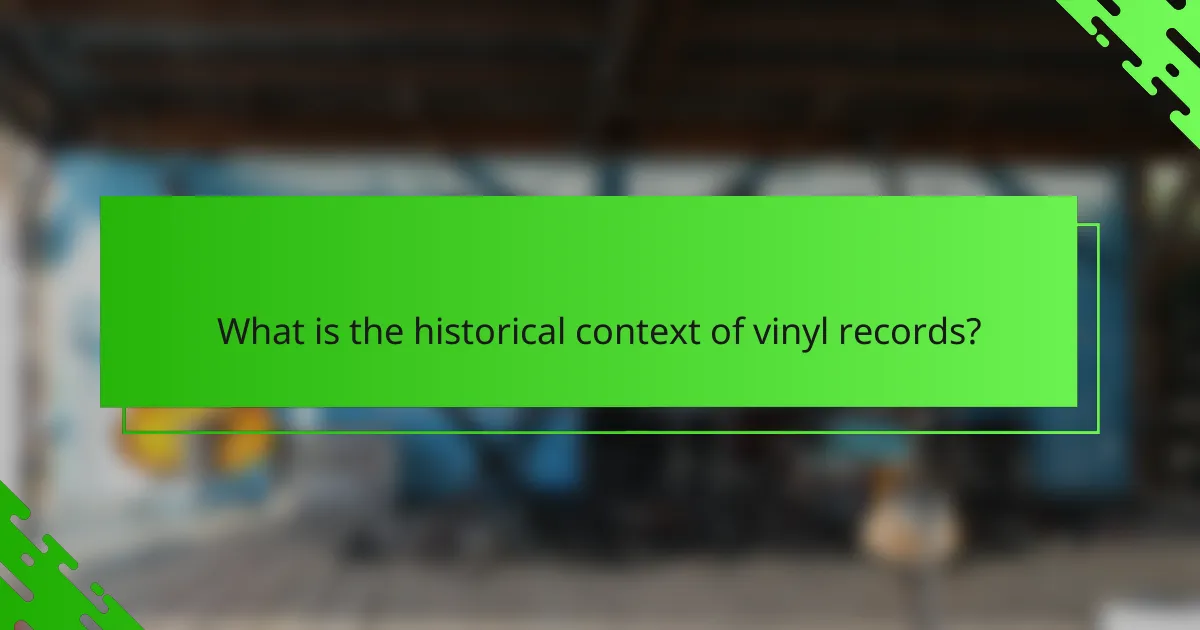
What is the historical context of vinyl records?
Vinyl records emerged in the early 20th century as a significant advancement in audio technology, replacing earlier shellac discs. Their development marked a pivotal moment in music history, influencing how music was produced, distributed, and consumed.
Evolution from shellac to vinyl
The transition from shellac to vinyl began in the late 1940s, with vinyl offering a more durable and flexible medium for recording. Shellac records were brittle and typically 78 RPM, while vinyl allowed for longer playtimes and lower speeds, such as 33 1/3 RPM for LPs and 45 RPM for singles.
This evolution not only improved sound quality but also enabled the production of albums that could hold multiple tracks. The introduction of the long-playing record (LP) in 1948 by Columbia Records revolutionized the music industry, allowing artists to create cohesive collections of songs.
Impact of the 1960s music revolution
The 1960s marked a cultural and musical revolution, significantly impacting the popularity of vinyl records. Artists like The Beatles and Bob Dylan utilized the LP format to explore artistic expression, leading to a surge in album-oriented rock and concept albums.
This era saw vinyl records become a symbol of youth culture and rebellion, with album artwork gaining importance as a form of artistic expression. The accessibility of vinyl also contributed to the rise of independent labels, allowing diverse musical styles to flourish and reach wider audiences.
